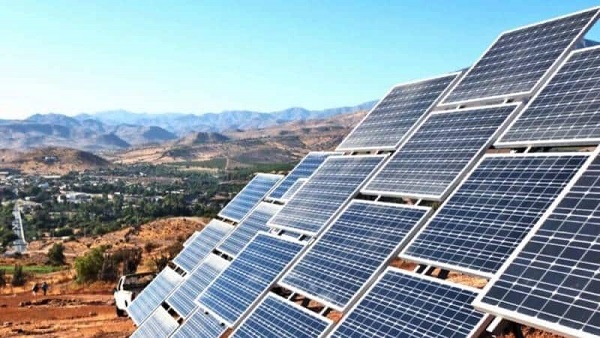KARACHI: Pakistan Stock Exchange above the 98,000 mark on Friday as share prices surged more than 2,000 points in intraday trade
LAHORE: The Punjab government has decided to launch a Rs39 billion new solar power plant project for the Water and Sanitation Agency (Wasa) disposal centres across the province.
The Punjab Energy Department and Wasa’s Lahore authorities presented a proposal to the government to install solar power plants at disposal stations and save millions of rupees. The government agreed to install 200-megawatt solar power plants at Wasa disposal stations and reduce Rs5 billion electricity bills annually.
According to the proposal, 591 tubewells work in Lahore for the supply of clean water. As many as 106 lift stations and 17 major disposal stations are operational for the disposal of sewage in Lahore.
Lesco supply is used with the sanctioned load of Wasa being 80 MW and running load of 40-50 MW which means the average consumption of 17 million units and energy expenditure of Rs460 million a month with the change of electricity tariff from D1 (b) scarp to A-3 General Services tariff.
“Installations worth an approximate Rs10-15 million have been added to the financial burden each month with the domestic water tariff being static since 2004. So the need of the hour is to look for new alternative energy sources to achieve the Millennium Development Goals (MDGs) to contribute to the wellbeing of societies around the globe.
One key approach to achieving those goals is to move towards renewable energy sources.
“Access to sufficient, reliable and cost-effective energy supply is vital for improving livelihoods and development in general. More than 1.6 billion people, roughly a third of the world’s population, live without access to electricity, with the majority living in rural areas. The World Bank estimates 67 per cent of the rural population in developing countries live without electricity.”
The project will provide a continuous flow of power supply to operate electrical motors which will further expedite the disposal station services, so the ultimate benefits would be saving electricity, more independence and security. The scheme will deliver socio-economic benefits to the community.
According to the study, it provides the community with better wastewater infrastructure which will reduce the risk of urban flooding. There are certain merits and demerits of using both kinds of energy sources. The review of the comparison reveals that the capital cost of a solar energy system is more than the electric-based energy cost, however, the O&M cost of an electric energy-based system is far more than the solar one. It can therefore be concluded that solar-based technology is more economical on a longer-term basis.
You May Also Like
TEHRAN: The head of Iran’s Revolutionary Guards described the arrest warrant issued by the International Criminal Court for Israeli Prime
LOWER KURRAM: The death toll in yesterday’s gun attack on passenger vans in Khyber Pakhtunkhwa’s Lower Kurram has risen to 42,






